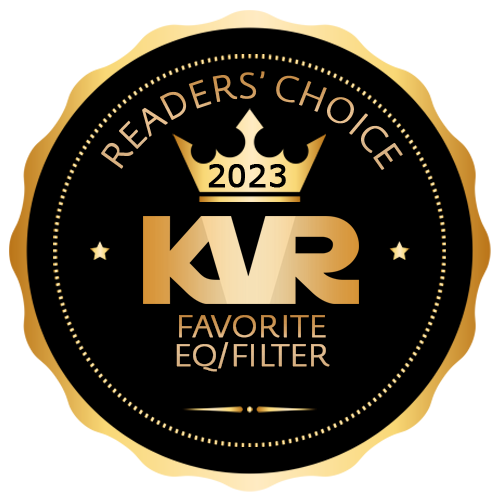ColourEQ is described as the first "super-parametric" equalizer. It uses a higher-order filtering scheme which leads to a qualitatively and quantitatively new frequency response. The additional degrees of freedom introduced lead to four controls per band instead of the traditional three as in standard parametric EQs.
Further features:
Reviewed By Masta Cress [all]
April 16th, 2013
Version reviewed: 1.2 on Mac
When i first saw this EQ i thought it is meant to color the sound.
Then i read about the color of the GUI which is changeable and I put the plugin demo away.
Now, the ColourEQ is Freeware. At least this draw my attention to this cool looking
Equalizer again. First I tried to use it as a bell filter to cut out some frequencies.
When I dipped through the frequencies I realized that they are not exact. In fact
the frequency I can see in the Parameter Box is around 50 Hz deeper than reality.
After a little confusion I tried the "Type B" Parametric EQ-Mode. A big "Ahaaa" Effect
came into my brain.
About the Filter curves:
"Type A" is not a "real" Bell-Type Filter. It offers a very smooth and rounded
curve when you turn the Q up and the Type parameter down. It does not have a sharp peak.
Ideal for boosting a specific range of frequencies without adding the typical 'edge' to the
sound. With the Type parameter on low setting you can avoid affecting the neighbor freq's.
The other extreme is lowering the Q. With the Type parameter you can choose the range
of the spectrum you want to equalize. The top is flat so if one turns down the overall gain
and boosts the Band-Gain one has a Band-Pass Filter.
"Type B" is a double-peak filter. This type of curve has sharp peaks when the Type parameter
is down. It differs its characteristic depending on the frequency. Fast Scrolling through frequencies
with a low Type param set results in pretty nasty 'resonance singing'. So when you try it: be careful
with this mode. ;).
Turning the Type parameter up is similar to the "Type A" curve. With this you do not have a
flat top so you can use this mode to cut out some frequencies in the middle with a ball-shape
while boosting its neighbors. In this mode the Q(ality) parameter sets the width of the two
filter peaks.
Now the band begins to play! The filter bands are affecting each others curves.
The sound is another thing! Its really clean but instead of the typical harshness of
digital EQs it can add some "cream"-like timbre to the sound if boosted to its limits.
Its not the pure sound of the source either i will get with a minimal or linear phase EQ.
I would call it a "damped sound". It sounds really good! :).
In the End it looks like this EQ is THE definite shaping EQ.
The last time i used it is when i wanted to make a Snare with the U-NO-LX. It does
not has a sinewave so I used the filter resonance instead. But it lacked in the mids.
I needed a 'punch' at around 200 Hz. With two ColourEQ's i tweaked it till it fits in
no time. A pure Gem for sounddesigners who are seeking for a good tone-shaping
EQ. But it can be much more than that thanks to its flexibility.
I had no problems with my DAW. (Ableton Live 8) The CPU consumption is relatively
low. (1-2% [a bit more as the EQ8 does] with my iMac 2GHz Duo Core).
A clear 10 of 10 by me.
Read Review $179.00Pro-Q 3
$179.00Pro-Q 3
Please log in to join the discussion
Submit: News, Plugins, Hosts & Apps | Advertise @ KVR | Developer Account | About KVR / Contact Us | Privacy Statement
© KVR Audio, Inc. 2000-2024